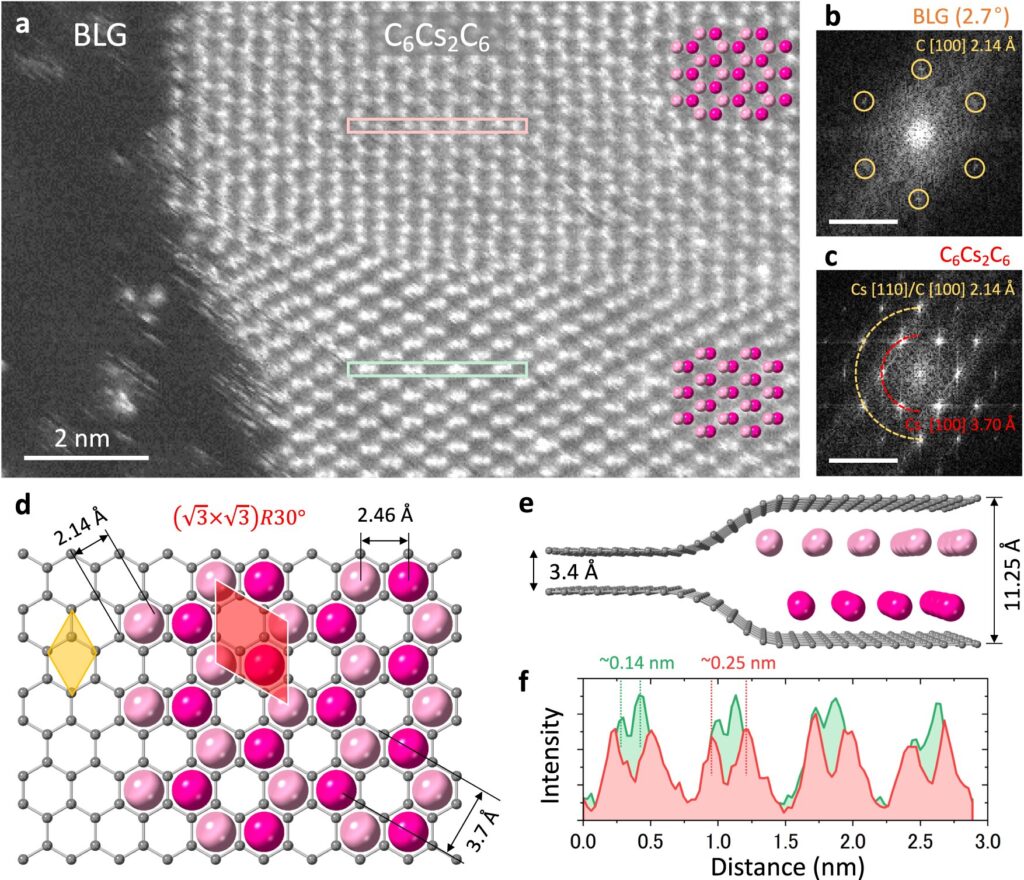Researchers at AIST, in collaboration with Osaka University, Tokyo Polytechnic University, Kyushu University, and National Tsing Hua University, have developed a technique to insert alkali metals into the interlayers of graphene, which is a single layer of carbon atoms arranged in a hexagonal lattice. They have succeeded in directly observing the atomic arrangement of the inserted alkali metal atoms which is a hexagonal close packed bilayer structure.
The study is published in the journal Nature Communications.
The performance of rechargeable batteries is a key factor influencing the driving distance of electric vehicles and the usage time of smartphones. Improving the performance of these electronic devices is possible if rechargeable batteries can accumulate greater electrical capacities.
Graphite, the electrode material used in batteries, is composed of multilayers of graphene, with alkali metals placed between the layers to facilitate the flow of electrons during charging and discharging. Achieving a high density of alkali metals storage between graphene layers could increase the electric capacity.
For the past hundred years, it has been widely recognized through X-ray and electron diffraction measurements that graphene interlayers can only accommodate a single layer of alkali metal. Each layer being fully filled by single layer alkali metal atoms is considered the theoretical charging limit.
However, there have been no reports of studies directly observing the atomic arrangement of interlayer alkali metals and verifying whether graphene layers can only accommodate a single layer of alkali metal atoms or whether other techniques can achieve higher density or multiple layers of alkali metals.
The research team developed a technique to insert dense alkali metals between graphene layers. Utilizing a high-performance low-voltage (60 kV) electron microscope, they have successfully observed the arrangement structure of alkali metal atoms between the graphene layers. The alkali metals are found densely packed in a two-layer structure in both bilayer graphene and in the surface layer graphite due to the flexible extension ability of their interlayer spacing.
This allows approximately twice as many alkali metals to be inserted. If graphene with two layers of alkali metal insertion can be stacked, it is expected to serve as an electrode material enhancing the capacity of alkaline ion secondary batteries.


